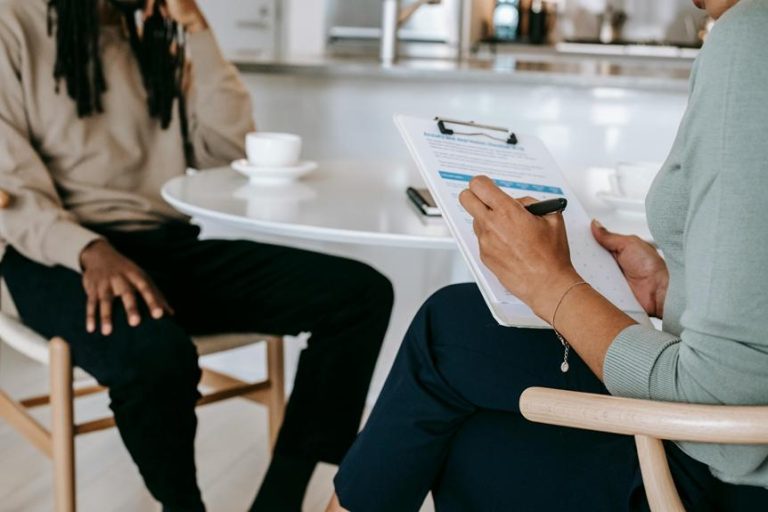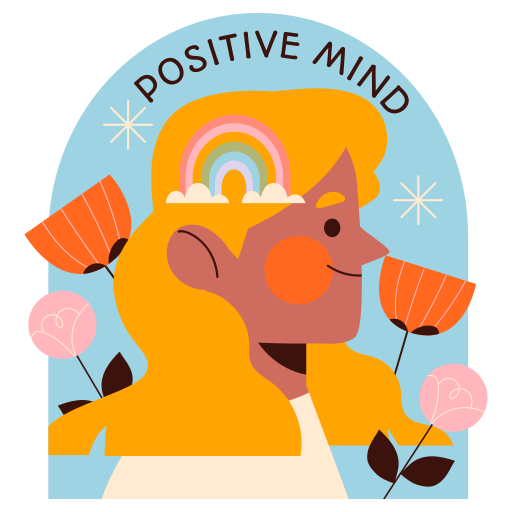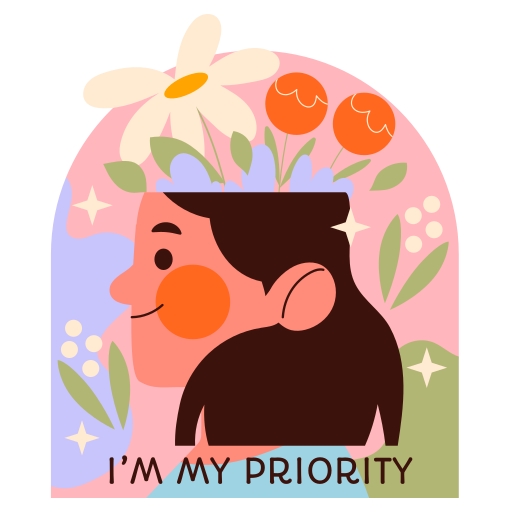Mastering active listening is a transformative tool that can uplift personal and professional relationships to new heights. By understanding the nuances of active listening, individuals can discover hidden layers of communication that often go unnoticed. The ability to truly listen goes beyond hearing words – it involves a deep connection with the speaker and the message being conveyed. As we navigate through this guide, we will decipher the intricate details that make active listening a game-changer in communication dynamics, paving the way for enhanced understanding and meaningful interactions.
Introduction to Active Listening
Active listening is a fundamental communication skill that involves not just hearing but truly understanding what the speaker is saying. It is about being fully present and engaged, showing the speaker that their words matter. By actively listening, individuals can foster deeper connections, build trust, and enhance mutual understanding in both personal and professional relationships.
What is Active Listening?
Employing active listening techniques is a foundational aspect of effective communication, enabling individuals to fully engage, comprehend, and respond to the spoken message. Active listeners focus not only on the words being said but also on the speaker’s body language, tone, and emotions. By showing that you’re listening through nonverbal cues and responses, you demonstrate empathy and understanding. Effective listening involves more than just hearing; it requires interpreting the message, asking clarifying questions, and reflecting feelings back to the speaker. By honing active listening skills, individuals can become better listeners, fostering stronger connections, preventing misunderstandings, and creating a supportive environment for open communication. This technique is crucial in various contexts, from personal relationships to professional settings, enhancing overall communication effectiveness.
Importance of Active Listening
Effective communication is greatly enhanced when individuals actively listen, as it involves fully concentrating on understanding, responding to, and remembering the spoken message. Active listening is a valuable skill that allows individuals to pay attention to what’s being said, thereby improving relationships and fostering better communication. By actively listening, individuals can steer the conversation in a positive direction and show respect for the person speaking. This skill enables individuals to say something meaningful in response, demonstrating empathy and understanding. Active listening is not just about hearing words; it’s about comprehending the underlying message and responding appropriately. Practicing active listening can lead to significant improvements in relationships, both personally and professionally.
| Importance of Active Listening | |
|---|---|
| Enhances communication | Improves relationships |
| Builds empathy | Fosters respect |
| Encourages meaningful responses | Enhances understanding |
Top Active Listening Activities
Top Active Listening Activities are crucial tools for honing communication skills across various age groups. These activities cater to adults looking to enhance their listening capabilities, students aiming to improve active listening skills, and preschoolers starting their path to effective communication. By engaging in targeted listening exercises tailored to specific needs and levels, individuals can foster a culture of attentive and empathetic communication.
Active Listening Activities for Adults
Engaging in active listening activities for adults can greatly enhance communication skills, empathy, and understanding in both personal and professional interactions. These activities often involve exercises like mirroring, paraphrasing, and summarizing to strengthen active listening abilities. Role-playing scenarios provide adults with opportunities to practice active listening in realistic situations, fostering better engagement and connection with others. Group discussions featuring active listening prompts encourage participants to concentrate on the speaker’s message and craft thoughtful responses. By incorporating active listening activities into training programs, organizations can promote team collaboration and effectiveness in the workplace. These activities play a critical role in honing essential listening skills, fostering empathy, and deepening understanding among adults in various interpersonal settings.
- Role-Playing Scenarios: Engage adults in role-playing activities where they take turns being the speaker and the listener. This helps participants practice active listening skills by focusing on the speaker, paraphrasing what they hear, and asking clarifying questions.
- Reflective Listening Exercises: Encourage adults to pair up and practice reflective listening. One person shares a story or experience while the other listens attentively without interrupting. The listener then reflects back what they heard to ensure understanding.
- Group Discussions with Active Listening Rules: Facilitate group discussions with specific active listening rules in place, such as no interrupting, asking open-ended questions, and summarizing key points. This encourages participants to actively listen to each other before responding.
- Mindfulness Listening Activities: Introduce mindfulness listening activities where adults focus on being fully present and attentive during conversations. This can involve guided meditation practices that enhance listening skills and promote deeper connections.
- Listening Skills Workshops: Organize workshops that focus specifically on improving listening skills for adults. These workshops can include interactive exercises, feedback sessions, and practical tips for enhancing active listening in various contexts.
- Listening Games and Challenges: Incorporate fun listening games and challenges into adult learning sessions to make practicing active listening more engaging. Games like “Telephone” or “Two Truths and a Lie” can help participants hone their listening abilities in a lighthearted way.
- Feedback and Reflection Sessions: Encourage adults to provide feedback to each other on their listening skills after engaging in activities or discussions. Reflecting on their own listening behaviors and receiving constructive feedback can help individuals identify areas for improvement.
- Real-World Application Tasks: Assign real-world tasks that require active listening skills, such as conducting interviews, participating in group projects, or resolving conflicts. This practical application helps adults transfer their learning into everyday situations effectively.
Activities to Improve Active Listening Skills for Students
Enhancing students’ active listening skills is vital for improving their communication effectiveness and academic success.
- Engage students in role-playing scenarios to practice listening and responding effectively.
- Implement active listening activities like ‘Telephone’ or ‘Mirroring’ to make learning interactive.
- Use active listening strategies during classroom discussions to foster student participation and critical thinking.
- Incorporate active listening exercises in training programs to enhance students’ ability to focus and retain information.
- Emphasize the importance of good communication and interpersonal skills for students, highlighting that listening is a skill that can benefit them in various contexts, from academic settings to future roles in customer service or team environments.
Here are some engaging activities to help students develop their active listening skills:
- Fill in the Blank for Song Lyrics: Choose a song with clear lyrics, create blanks in the text, play the song, and have students fill in the missing words. This activity tests their ability to listen and understand lyrics in real-time.
- Write What You Hear: Read sentences aloud for students to write down what they hear, similar to a spelling bee but with full sentences. This enhances their ability to listen for detail and improves their note-taking skills.
- Summarize a Short Story: Read a story aloud multiple times, then have students draw pictures based on what they heard and compare them. This activity encourages them to listen for main ideas and details to visualize the story.
- Telephone Game: A classic game where students pass a message down a line to practice listening and relaying information accurately. This game is great for showing how easily information can be misinterpreted or changed.
- Simon Says: Engage students in a game that requires careful listening and following instructions precisely. This fun activity improves their ability to focus and follow detailed commands.
- Mime it Out: Encourage students to act out topics using expressions and body language for others to guess, focusing on non-verbal cues. This activity highlights the importance of listening to visual as well as auditory information.
- Omit the Obvious: Repeat words related to a topic, omitting an obvious word, then discuss unrelated topics before asking participants to identify the missing word. This enhances their ability to focus and remember key details.
- Read Stories: Engage children in daily reading to improve listening skills by immersing them in different narratives and characters. This fosters imagination and empathy through attentive listening.
- Initiate Conversations: Encourage children to engage in conversations to explore new ideas and express their viewpoints, promoting active listening. This activity helps them learn to listen attentively to others and articulate their thoughts.
- Become a Model Listener: Demonstrate active listening by maintaining eye contact and showing genuine interest when your child speaks, serving as a role model for attentive listening. This encourages children to mirror effective listening behaviors.
Listening Activities for Preschoolers
Developing active listening skills in preschoolers is foundational for their future communication abilities and social interaction capabilities. Engaging in activities like storytelling, role-playing, and listening to music can greatly enhance their listening skills. These activities encourage children to focus, pay attention, and respond appropriately during conversations, fostering their emotional intelligence and promoting social interaction. By incorporating active listening activities in preschool education, educators can help children build a strong basis for effective communication in the future. Encouraging youngsters to actively participate in listening exercises not only benefits their individual growth but also contributes to creating a more attentive and empathetic community. Through these activities, preschoolers learn the value of attentive listening, setting the stage for improved communication and understanding as they grow.
Here are some engaging activities to improve listening skills:
- Broken Telephone: A game where a message is whispered from person to person.
- Model Good Listening: Children learn by example, so adults should demonstrate good listening behavior.
- Praise Good Listening: Encourage and praise children when they listen well with specific feedback.
- Thumbs up or Thumbs down: A game where children indicate agreement or disagreement with statements.
- Pass the Story: A storytelling game where each child adds a sentence to create a story.
- Simon Says: A classic game where children follow commands if preceded by “Simon says.”
- Red Light/Green Light: A game involving movement where children stop on command.
- Funny Whispers: A fun game where messages are whispered and passed along, often resulting in humor.
Active Listening Books
Active Listening Books serve as valuable resources for individuals seeking to enhance their communication skills through improved listening techniques. These books offer practical guidance, insightful perspectives, and actionable steps to help readers develop a deeper understanding of active listening’s significance. By exploring the curated list of top Active Listening Books, individuals can start on a path towards becoming more empathetic, attentive, and effective listeners in various personal and professional contexts.
5 Best Active Listening Books to improve Your Communication Skills
In the domain of communication improvement literature, a selection of Important Listening Books stands out as important resources for honing one’s listening skills and fostering stronger connections with others.
- Just Listen: Uncover the Secret to Getting Through to Absolutely Anyone – by Mark Goulston
- The Lost Art of Listening: How Learning to Listen Can Improve Relationships – by Michael P. Nichols
- You’re Not Listening: What You’re Missing and Why It Matters – by Kate Murphy
- Critical Conversations: Tools for Talking When Stakes Are High – by Kerry Patterson, Joseph Grenny, Ron McMillan, Al Switzler
- Nonviolent Communication: A Language of Life – by Marshall B. Rosenberg
These books offer practical guidance on active listening, enhancing communication skills in workplaces, relationships, and leadership roles. By exploring these resources, individuals can nurture empathy, personal growth, and professional development through improved listening practices.
Active Listening Quotes
Exploring quotes on active listening offers valuable insights into the impact of attentive listening on communication dynamics. These quotes often encapsulate the essence of empathy, understanding, and connection that active listening fosters. By reflecting on these quotes, individuals can gain inspiration and motivation to enhance their listening skills for more meaningful interactions.
Quotes on Active Listening
Understanding the essence of effective communication lies in the wisdom encapsulated within quotes on the art of active listening.
- Customer Service: ‘Listening is about being present, not just about being quiet.’
- Effective Listener: ‘The biggest communication problem is we do not listen to understand. We listen to reply.’
- Active Listener: ‘Listening is an attitude of the heart, a genuine desire to be with another which both attracts and heals.’
- Communicate: ‘The most basic of all human needs is the need to understand and be understood.’
- Nonverbal: ‘The most critical thing in communication is hearing what isn’t said.’
These quotes emphasize the essence of showing empathy, using nonverbal cues, and asking open-ended questions to validate and understand others, highlighting the essence of good listening.
Quotes About Active Listening
Drawing insight from the significance of effective communication encapsulated in previous quotes, reflections on the art of active listening through notable quotes about active listening offer profound wisdom and guidance. Research shows that quotes about active listening can serve as foundational principles to improve your listening skills, help others, and show your interest in their thoughts. These quotes are not merely words but an indication of the deeper understanding that active listening can facilitate in relationships and professional settings. By internalizing these quotes and putting them into practice, individuals can become more effective communicators, fostering trust, collaboration, and overall success. Here are some compelling quotes about active listening:
| Quotes About Active Listening | Author |
|---|---|
| “The most basic of all human needs is the need to understand and be understood.” | Ralph Nichols |
| “Listening is a magnetic and strange thing, a creative force.” | Karl A. Menninger |
| “The art of conversation lies in listening.” | Malcolm Forbes |
| “Listening is being able to be changed by the other person.” | Alan Alda |
Practical Applications

In the domain of active listening skills, practical applications play a pivotal role in various settings. Understanding how active listening can benefit relationships, customer service interactions, and call center operations is crucial for effective communication. By implementing active listening techniques tailored to these specific contexts, individuals can foster deeper connections, resolve conflicts, and enhance overall satisfaction.
Active Listening in Relationships
Active listening in relationships is a fundamental skill that nurtures deeper connections and understanding between individuals, fostering trust and empathy within the context of communication. When actively listening in relationships, the following key practices are crucial:
- Utilizing nonverbal cues like eye contact and nodding to demonstrate engagement and understanding.
- Engaging empathy to emotionally connect with the speaker and comprehend their perspective.
- Employing reflective listening techniques, such as paraphrasing or summarizing, to enhance communication and display genuine interest.
- Building trust through active listening, which strengthens relationships and effectively resolves conflicts by promoting mutual understanding.
Active Listening in Customer Service
Utilizing active listening techniques in customer service interactions plays a pivotal role in enhancing customer satisfaction and fostering lasting relationships between businesses and their clientele. Active listening plays a crucial role in customer satisfaction, with potential increases of up to 20% according to a Harvard Business Review study. Not only does it enhance satisfaction, but it also boosts sales conversion rates by 40% and increases the likelihood of repeat business by 15%. Additionally, active listening enables customer service representatives to resolve issues 50% faster, leading to improved customer retention rates. By reducing customer escalations by 30%, businesses can effectively manage conflicts and enhance overall customer experiences. Mastering communication skills and listening techniques in customer service is vital for building trust and loyalty with clients.
Tips for Improving Active Listening: Stay focused and avoid distractions like noise or multitasking
- Show interest in the speaker through verbal and nonverbal cues.
- Avoid interruptions and allow the speaker to finish their thoughts before responding.
- Paraphrase what the speaker said to ensure understanding.
- Ask questions to delve deeper into the customer’s needs.
- Active Listening in Call Centers
With the increasing demand for exemplary customer service experiences, call centers are recognizing the pivotal role of active listening techniques in enhancing customer satisfaction and operational efficiency.
- Active listening in call centers can improve customer satisfaction rates by up to 10%.
- Call center agents who actively listen have been shown to resolve issues 25% more rapidly.
- Implementing active listening techniques in call centers can reduce customer service costs by 30%.
- Agents practicing active listening skills experience a 20% increase in initial call resolution.
- Call centers focusing on active listening see a 15% boost in customer retention rates.
Active Listening Exercises

Engaging in structured listening exercises can greatly enhance one’s ability to comprehend and empathize with others. Active listening exercises involve various techniques such as paraphrasing, summarizing, and reflecting on the speaker’s message. By practicing these exercises, individuals can improve their communication skills, build empathy, and strengthen relationships. Role-playing scenarios are particularly effective in simulating real-life conversations, allowing individuals to hone their active listening skills in a safe environment.
To emphasize the benefits of active listening exercises, the table below illustrates how different exercises contribute to enhancing listening skills and fostering better communication and relationships:
| Exercise | Contribution |
|---|---|
| Paraphrasing | Demonstrates understanding of the speaker’s message and encourages clarity. |
| Summarizing | Helps condense information and ensures key points are captured effectively. |
| Reflecting | Shows empathy and validates the speaker’s emotions, fostering trust. |
Top Active Listening Certification
Acquiring a top active listening certification equips individuals with specialized training to enhance their listening skills and communication effectiveness.
- Certification programs provide structured training on active listening techniques.
- Participants learn to effectively paraphrase speaker’s messages for better understanding.
- The certification helps individuals in taking action based on customer or colleague needs.
- In-person training programs offer hands-on practice to refine listening abilities.
- Having an active listening certification gives professionals a competitive advantage in their careers.
Here are some of the top active listening certification courses available:
- EdApp’s Handling Objections with Emotional Intelligence Course: This course focuses on active listening, appropriate body language, resolving conflicts, and taking feedback professionally. It is designed to enhance team communication skills.
- Coursera’s Active Listening: Enhancing Communication Skills: This comprehensive course introduces learners to various techniques and strategies for active listening in both personal and workplace interactions. It covers interpreting nonverbal cues, enhancing relationships, and navigating cross-cultural communication.
- Certification in The Art of Listening by ASTRON E-College: This course emphasizes reducing conflict, motivating others, and inspiring commitment through improved listening skills. It covers barriers to effective listening and tools for empathetic listening.
- eCornell’s Active Listening and Processing Feedback Course: Led by Professor Judi Brownell from Cornell University, this course helps assess listening skills, set goals, and develop a strategy for improvement. It focuses on applying listening principles to servant leadership.
- Udemy’s Active Listening: You Can Be a Great Listener Course: This course provides real-world examples to simplify active listening techniques and help learners become great listeners.
Advantages of Active Listening

Active listening offers a myriad of benefits, both on a personal and professional level. By truly engaging with others, individuals can nurture stronger relationships, foster trust, and enhance communication skills. These advantages not only lead to improved understanding and conflict resolution but also promote a more positive and collaborative environment in various settings.
Personal Benefits
The advantages of active listening extend beyond mere communication skills to encompass a range of personal benefits that enhance relationships, problem-solving capabilities, and overall trustworthiness.
- Improved Personal Relationships: Active listening fosters understanding and empathy, strengthening connections with others.
- Enhanced Problem-Solving Skills: It allows for better comprehension of complex issues, leading to more effective problem resolution.
- Increased Trustworthiness: Active listeners are perceived as more trustworthy and reliable in personal and professional settings.
- Higher Job Satisfaction: Improved listening skills contribute to increased job satisfaction and career success.
- Reduced Conflicts: Active listening reduces misunderstandings and conflicts by promoting clear communication, thereby fostering harmonious relationships.
Professional Benefits
Improved active listening skills in professional settings lead to heightened efficiency, stronger team dynamics, and enhanced client relations, ultimately contributing to overall organizational success. Active listening plays a pivotal role in workplace productivity by reducing misunderstandings and fostering clear communication channels. It enhances team collaboration by ensuring all voices are heard, leading to better problem-solving capabilities. Furthermore, active listening nurtures relationships with clients, resulting in increased customer satisfaction and loyalty. Employees experience higher engagement and motivation levels when they feel actively listened to by their leaders, fostering a positive work environment. In addition, effective active listening skills are instrumental in conflict resolution, reducing workplace stress, and promoting a harmonious atmosphere that benefits both individuals and the organization as a whole.
Active Listening Workshops
Participating in workshops focused on honing active listening skills offers individuals a structured environment to practice and refine their abilities in attentive communication. These workshops typically include:
- Engaging in interactive exercises and role-playing scenarios to simulate real-life listening situations.
- Learning and practicing techniques such as paraphrasing, summarizing, and asking clarifying questions to enhance comprehension.
- Focusing on developing empathy to better understand the speaker’s perspective and emotions.
- Understanding nonverbal cues to grasp the underlying messages conveyed during conversations.
- Creating a supportive environment where individuals feel encouraged to actively listen and communicate effectively.
Facilitators play a critical role in these workshops by providing constructive feedback and guidance to help participants improve their listening skills. Organizations recognize the value of investing in active listening workshops, as they not only enhance individual communication skills but also contribute to improved teamwork, employee engagement, and overall productivity within the workplace.
Frequently Asked Questions
What Is Active Listening and How Can We Become Better Listeners?
Active listening involves attentively engaging with speakers to understand their perspectives fully. By honing skills like focusing on verbal and nonverbal cues, summarizing key points, and responding empathetically, individuals can enhance their listening abilities, fostering stronger connections and communication.
What Are the 3 A’s of Active Listening?
The 3 A’s of active listening are Attentiveness, Acknowledgment, and Affirmation. Attentiveness involves focusing on the speaker, maintaining eye contact, and avoiding distractions. Acknowledgment includes nodding, using verbal cues like ‘I see,’ and paraphrasing the speaker’s words. Affirmation entails showing support and understanding.
What Are 5 Active Listening Strategies?
Engage in active listening with strategies like maintaining eye contact, nodding to demonstrate understanding, reflecting on the speaker’s words, asking clarifying questions, and showing empathy through nonverbal cues. These techniques foster better communication and relationships.
What Are the 4 Elements of Active Listening?
The four elements of active listening are paraphrasing, reflecting feelings, summarizing, and guaranteeing understanding. Paraphrasing involves restating the speaker’s words, reflecting feelings acknowledges emotions, summarizing captures main points, and guaranteeing understanding guarantees clarity.

















